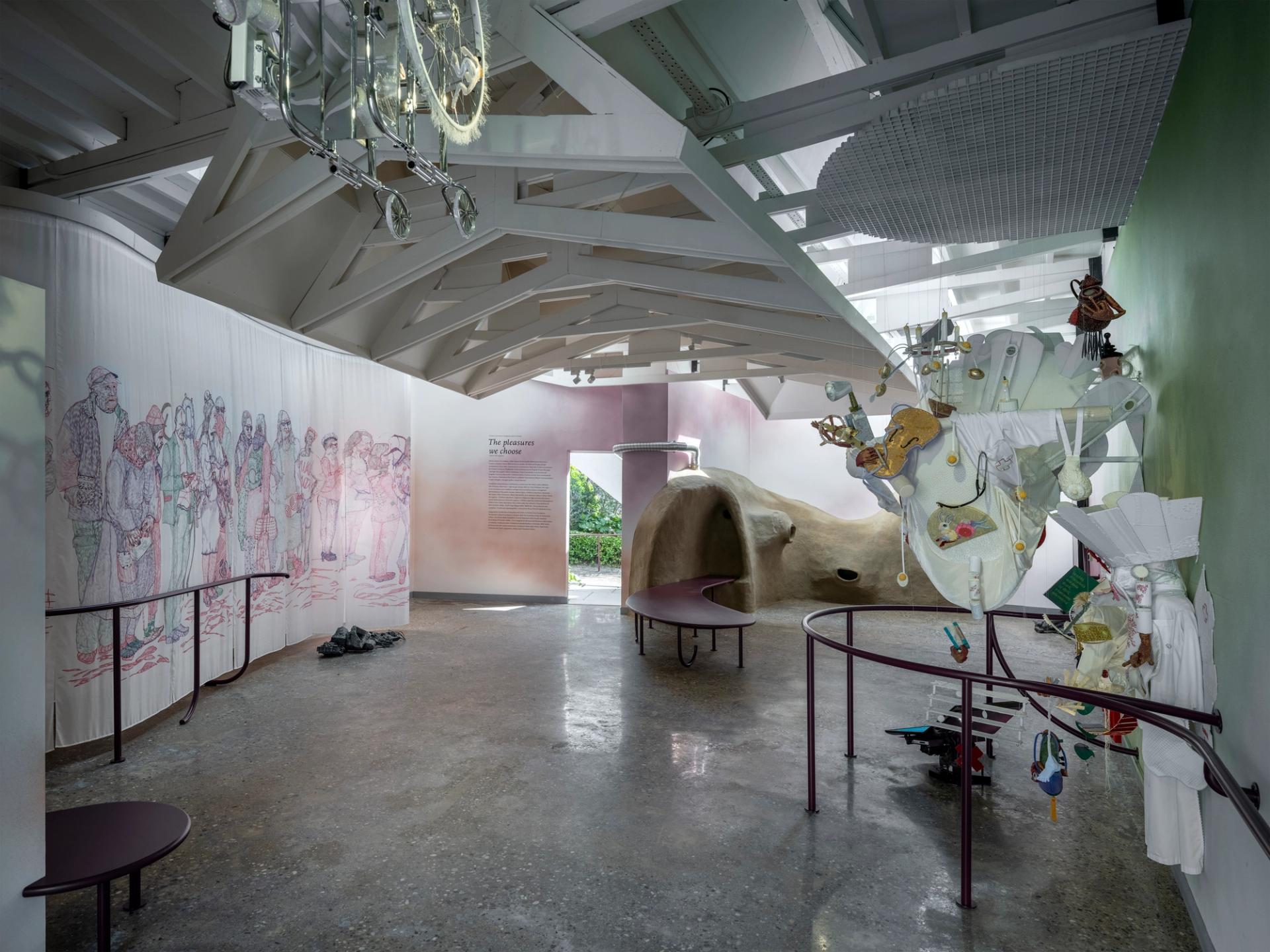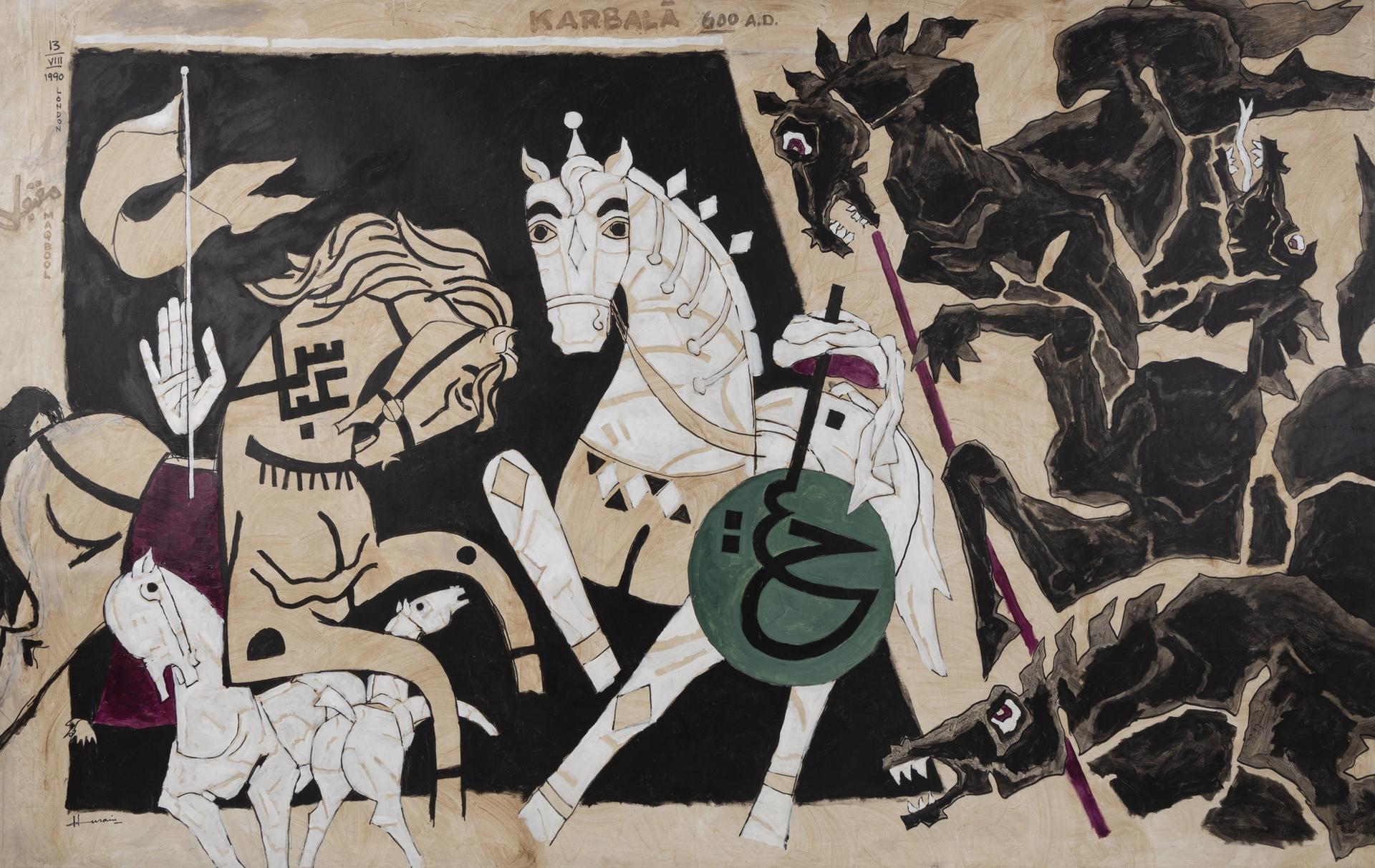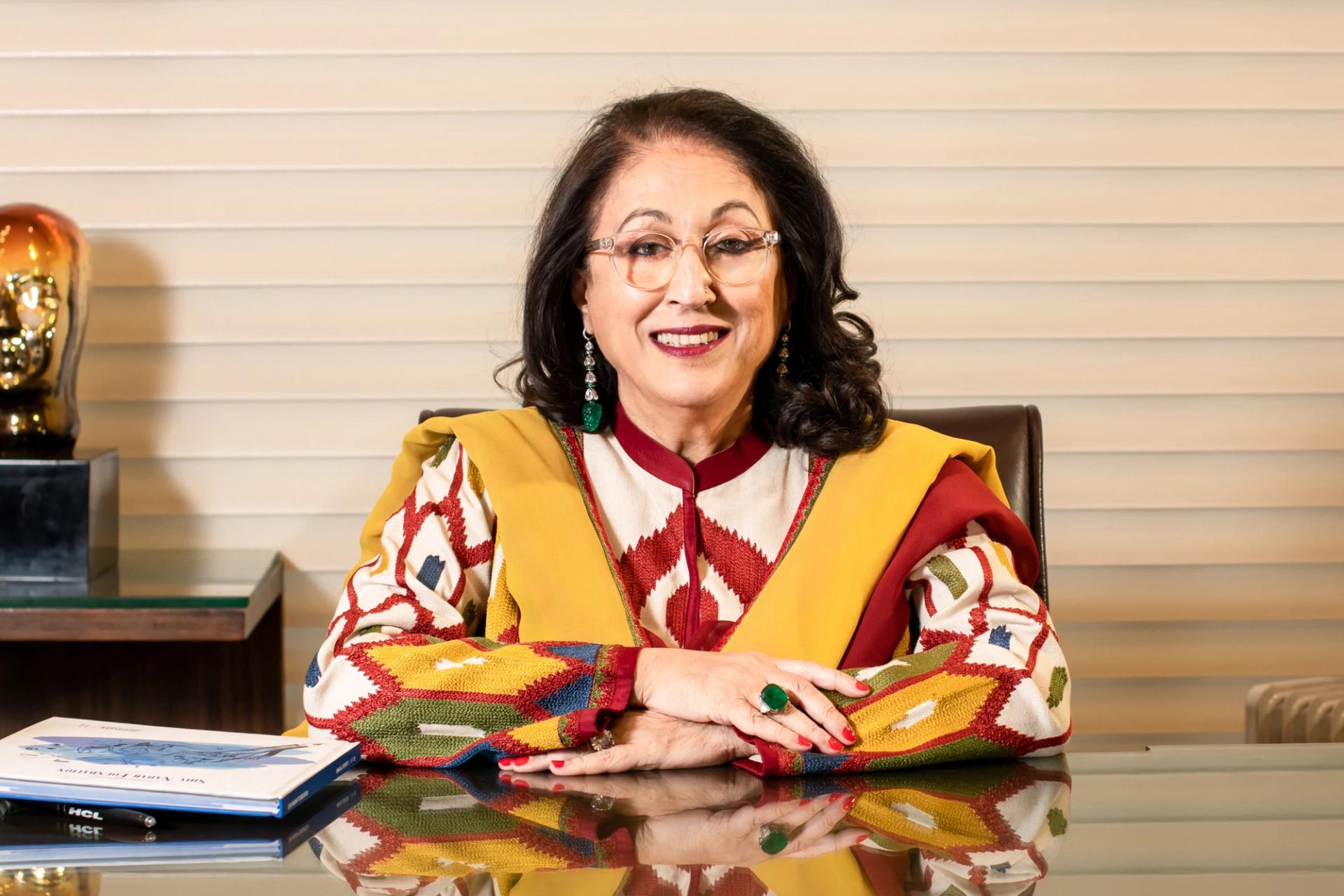India, the world's most populous country, once again does not have a pavilion at the Venice Biennale, the 60th edition of which opens to the public on Saturday (20 April-24 November).
The country's national participation has been scarce and inconsistent: just two India pavilions have been staged in the Biennale’s 125-year history, the first in 2011 and the second in 2019. Nonetheless, this year at Venice, the presence of Indian art and the industry behind it has never been greater.
Adriano Pedrosa’s international exhibition, Foreigners Everywhere, includes 12 Indian artists—an all-time record, and quadruple the amount of the previous Biennale. Featured in the Global South-focused show are the contemporary artist Monika Correa and the Bangalore-based women-led collective Aravani Art Project, as well as major 20th-century figures including Amrita Sher-Gil, S.H. Raza, Bhupen Khakar and Jamini Roy.
Artists belonging to the Indian diaspora—the world’s largest—will also participate in a handful of national pavilions and official collateral events. One of the three artists representing Finland this year is the Patna-born Vidha Saumya, who is showing cross-stitched textiles, drawings and sculptures. And Eva Koťátková’s Czech and Slovak pavilion about a dead giraffe is made in collaboration with Himali Singh Soin, who is based between New Delhi and London.

Vidha Saumya is one of the three artists representing Finland this year © Photo: Ugo Carmeni / Frame Contemporary Art Finland
Meanwhile, the organisation Creative New Zealand, which regularly commissions the New Zealand pavilion, is sponsoring the participation of two New Zealand artists in the collateral event Personal Structures, one of whom is the Mumbai-born textile artist Areez Katki. And a group show of Southeast Asian artists organised by the Thai conglomerate One Bangkok, titled The Spirits of Maritime Crossing, features the Singaporean Indian Priyageetha Dia’s deep-sea video on ancestral migration from India to the Malay Peninsula.
Indians are also funding other national shows. This year’s British pavilion is partly sponsored by the London-based, Indian-born billionaire philanthropist and collector Aarti Lohia, the chairperson of the SP Lohia Foundation. This is the first time Lohia’s foundation has supported the Biennale; she declines to say for how much. She points out that the pavilion is also curated by a “fellow Indian”, the London-based Tarini Malik.
Such widespread representation makes the lack of an Indian pavilion all the more conspicuous, especially when considering the growing international presence of major collectors in India who would be well placed to help fund the show. A number of these ultra-wealthy individuals, typically members of prominent industrialist families, are opening new art institutions across the subcontinent and driving a South Asian art market boom.
Two such powerful patrons are both staging collateral events in Venice this year focusing on Indian art. The first, Cosmic Garden, in a historic art venue near the Rialto Bridge, will bring together paintings and new embroidered sculptures by the husband-and-wife artists Manu and Manisha Parekh, alongside those of dozens of artisans from the Mumbai-based non-profit Chanakya School of Craft. The school is dedicated to teaching skills to women, many of whom face socio-economic hardship, while preserving India’s cultural heritage.
“India has such an immense wealth of craft, design and other local art forms. But much of it is not institutionalised, based on oral traditions, and therefore at peril of being lost. Our mission is to reverse that by documentation and empowering communities,” says Karishma Swali, who founded the school in 2016 as an extension of her father’s 40-year-old couture embroidery house, Chanakya International.
Swali says that because Cosmic Garden is the first event in Venice her foundation has staged, she did not consider partnering with the government on a national pavilion. Nonetheless, she adds that she would be willing to consider sponsoring future pavilions and that India’s national presence at the biennial is something “she holds close to her heart”.

M.F. Husain, Karbala (1990) Image: courtesy of the Kiran Nadar Museum of Art
Also opening this week in Venice is a retrospective on the celebrated Indian painter M.F. Husain, organised by the country’s leading private art museum, the Kiran Nadar Museum of Art (KNMA) in New Delhi. “I don’t think Husain took me seriously as a collector in his lifetime,” the museum’s eponymous founder tells The Art Newspaper, recalling the friendship she shared with the artist. “Certainly he wouldn’t have predicted I’d stage a show of this scale in Venice.”
For the exhibition, works by Husain, almost all from the KNMA collection, including his never-before publicly seen 1990 painting Karbala, will join an interactive virtual reality display, powered by the team behind the commercially successful Van Gogh Experience. Digitally projected images of Husain’s art will make up around 60% of the show, Nadar says. The show will be smaller than a major survey of the Bombay Progressives, the Indian artistic movement with which he is associated, held by the KNMA in 2017, she adds, due to the limited capacity of the Venice venue, located in the Dorsoduro area.

KNMA founder and chairperson Kiran Nadar Image: courtesy of the Kiran Nadar Museum of Art
While Husain is a well-recognised name in South Asian art circles and had exhibited prominently in Europe during his lifetime, this show will likely be an introduction to his work for many visitors. Accordingly, it will broach the personal history of the artist, who was raised in a Muslim household and promoted syncretic cultures, including his long-running disputes with Hindu groups over his stances on religious freedom and expression. In 1998, Husain’s house was attacked by Hindu extremists; the action was endorsed by the far-right party Shiv Sena, which is part of the political coalition that now leads the national government of India.
In light of current political tensions around religious extremism in India, whether the Husain show could be staged in its entirety were it partially funded by the state is uncertain. In her 2022 comment piece for The Hindu, titled “India is a no-show at the Venice Biennale—and this may be a good thing”, the Mumbai-based writer Anindita Ghose argued against a national pavilion for India, maintaining that curators would be unable to fully address charged subject matter in an exhibition backed by the state. “To not speak at all is better than to whimper on a global stage,” she wrote.
While Nadar acknowledges that holding the Husain show as a national pavilion would “not be as easy”, she adds that India's 2019 Mahatma Gandhi-themed pavilion—of which she was the sole private sponsor, underwriting around 70% of the show’s budget—included works by Atul Dodiya that referenced the razed Babri Mosque and a work by Husain on communal violence in India. Nadar says she wants to stay away from controversy, however, and have the current show focus on why Husain is considered one of the greatest painters of India, and of the 20th century.
She adds that it is “a real shame India hasn’t gotten our act together this Biennale. We are too big a country to not have a regular pavilion at Venice”. Indeed, at one stage, India was slated to have a national pavilion at this year's edition, but this was quietly called off.
A document sent to The Art Newspaper by the Biennale’s press office in January listed India as one of the national pavilions, commissioned by the National Gallery of Modern Art; a later revised version of this list did not include India. According to Nadar, talks were under way for an India pavilion, but the preparation time allotted was insufficient, and that the proposed venue for the show was “offered at an exorbitant price”, she says. “I really hope we can make it work again.”
Desire for a more consistent national presence at the Biennale is echoed by another figure who was crucial to 2019's India Pavilion. Tarana Sawhney, the chairperson of the arts and culture task force for the Confederacy of Indian Industry (CII), under the ministry of culture, says she is determined to get another show off the ground. While the 2019 pavilion only included Nadar as the private sponsor, Sawhney says she is open to the idea of multiple private sponsors for future exhibitions.
Reasons she gives for the no-show at this year's Biennale include the fact that India focused much of its culture budget and resources on hosting the G20 summits in 2022. Furthermore, a new biennial, the India Art, Architecture and Design Biennale, was launched in December 2023 in New Delhi’s historic Red Fort at “an impressive scale”, she says, limiting resources that could be spent on Venice.
With a new biennial for Indian art and plenty of exposure at collateral Venice events, one might question why India even needs to have a pavilion at the Biennale. But Sawhney emphasises that the 2019 pavilion has had a positive impact on India's recognition on the global stage, leading to greater acquisitions from major international institutions and “more international” conversations in the domestic art scene. Now, she adds, “India is striding high—across every sector. Culture always needs to be included in that.”


